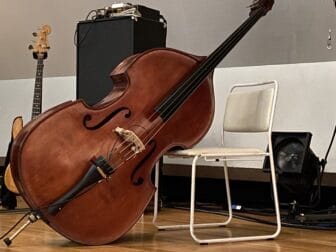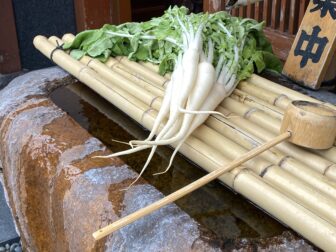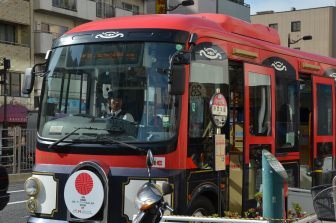Tokyo
Population of Tokyo: 13,634,685 (October 2016)
Population of the metropolitan area: 37,800.00
Telephone area code: +03
Automotive symbol: The name of the municipality is given
Surface area: 2,167,66 Km2
Metropolitan surface area: 13.762 Km2
Tokyo, the capital of Japan, is one of the most densely populated metropolitan areas in the world and is also one of the world’s most important economic centres.
Tokyo is thought of as a city but, technically, it has been a metropolitan prefecture since 1943.
It also includes relatively distant territories to the west of the prefecture along with the islands of Izu and Ogasawara.
If you consider those who live in Tokyo as residing in the metropolitan prefecture, they number in excess of 13 million inhabitants.
Looking at Tokyo in a broader sense, the enormous city extends seamlessly to Chiba and Yokohama reaching a population of 37,800,000 people which makes it the most populous metropolitan area, not only in Japan, but in the world.
What to see in Tokyo
Japanese modernity: the image of Japan in Europe is that of an ultra-modern ant colony that is inhabited by millions of people.
This is partially true but what is less well known is that Tokyo is one of the safest cities in the world and, in some ways, the easiest city in which to live on this planet.
A good guide to Tokyo would undoubtedly recommend a visit to Ueno Park where all the important national museums are located as well as the Zoo and the interesting and lively Ameyoko Market.
Between Ueno and Nippori, the beautiful area of Yanaka has retained the old-fashioned flavour of small shops and cafes along the streets. In addition to this, there is quite a concentration of ancient temples in the Yanaka district, some of which had been dismantled elsewhere in the past and rebuilt here.
When visiting Nippori, we recommend a stroll through the area of senigai which is famous for its fabric and textile shops.
The Shibuya district, with its famous pedestrian crossing and mega screens that dominate the area in front of the station, is a classic spectacle representing the European image of the frenetic city of Tokyo.
In Tokyo, the Buddhist temples and the Shinto shrines are nestled amongst the palaces in every area of the city but the temple at Asakusa, one of the most ancient, really does merit a visit, both for the beauty of its majestic portal (the kaminarimon, known as the Thunder Gate) together with the street full of souvenir shops that leads to the temple’s main building
The Odaiba quarter is an area of the city that has been recently rebuilt, reclaiming land from the sea and is also an interesting place to visit because it is now the location of some new museums such as the Miraikan (the National Museum of Emerging Science and Innovation) or the Joypolis amusement park.
Tokyo’s Central Station (on the city’s Mauronochi side) which was destroyed in bombing raids during the Second World War, has recently been rebuilt and looks exactly as it did in the pre-war period.
For further information regarding the numerous things to see and do in Tokyo, we suggest that you have a look at our blog.
The districts of Tokyo
Until 1943, the city of Tokyo was divided into 23 principal districts. Nowadays, these are run as independent units which are half-way between a district and an actual municipality.
The 23 municipalities of Tokyo are: Shibuya, Shinjuku, Arakawa, Taito, Shinagawa, Nerima, Edogawa, Itabashi, Suginami, Sumida, Adachi, Bunkyo, Chiyoda, Chuo, Katsushita, Kita, Koto, Minato, Meguro, Setagaya, Ota, Toshima and Nakano.
These vary in population size (from 40,000 to 830,000 people) and area (10 to 60 square kilometres).
Climate
Tokyo’s climate, like the rest of the island of Honshu, is similar to ours at certain times of the year and at others, it is completely different. From October to May, the temperature in Tokyo isn’t much different from the average temperature in Italy, for example.
The “rainy season,” the torrid heat of summer, (let’s not forget that Tokyo is on the same latitude as Tangiers in Morocco and Teheran), and the typhoon season in September, are phenomena that have a closer link to the influence of the monsoons.
History
The ancient name for Tokyo, Edo, literally means “estuary.” Originally, it was a small fishing village in which the Edo clan eventually built a fortified castle in 1457.
When Tokugawa Ieyasu, who emerged as the victor in the wars that had divided the feudal lords in the previous century, became the Shogun of all Japan, he chose Edo as his head-quarters.
Tokugawa’s era, also called the Edo period which was the given name of the central political power, constituted a long period of peace and increased social control which laid the foundations of the state and the economy of Japan as we know them today.
The principal city throughout the two centuries of the Tokugawa’s governance was Edo which, during this time, developed into one of the major cities of the world.
During the Tokogawa era, also known as the Edo period, although the capital was still Kyoto which was the seat of the imperial court, the political and economic centre was Edo.
The role of the capital and its growing importance were also due, in part, to the system known as sankin kotai. According to this system, the lords from various parts of Japan were forced to reside in Edo on alternate years, and when they were not in Edo, their wives and children were obliged to remain there.
This system, which bears some resemblance to what Louis XIV did with the French aristocracy, was designed to keep the feudal lords under control as in previous centuries, they had engendered a serious threat to any form of centralized power.
The sankin kotai also weakened the gentlemen financially due to the onerous expenses they incurred whilst residing in Edo as well as the sumptuous cavalcades in which they moved to and from their place of origin.
When the Tokugawa government was overthrown by the Meiji Restoration, which turned the Emperor into the new figure-head of power, the capital was moved from Kyoto to Edo which, being to the east of the previous capital, took the name of Tokyo, which means “eastern capital.”
The Tokugawa headquarters became the new imperial palace and the city was divided into two parts, Yamanote and Shitamachi.
The Taisho period, (1912-1926) saw a significant increase in the population and in the city’s productive activities. A life style that was more geared towards consumerism started to burgeon. There was also an improvement in general standards of education that were more open to all, including women.
The sankin kota system was also beneficial with regard to the development of the Tokaido zone, the main artery that connected Edo and the south of the country across the Pacific coast and there was also a certain unification of the Japanese language.
During the Meiji period and the afore-mentioned urbanization, the map of Tokyo changed quite considerably. In 1872, the first railway line was inaugurated which united Tokyo and Yokohama. In 1882, the zoological garden of Ueno was opened.
The great Kanto earthquake of 1923 and the tremendous fire that followed it, completely destroyed the city centre.
During the Showa period, (1926-1989) it was only possible to partially realise the exorbitant restoration project. Despite this, the first metropolitan line from Tokyo to Asakusa and Ueno was opened in 1927 and in 1931, the first airport was built at Haneda.
By this time, the population had reached nearly 6.5 million inhabitants.
Tokyo was destroyed again by the bombings during World War II and was rebuilt, yet again, during the post war years.
In 1943, the 23 districts of Tokyo and the prefecture merged the metropolitan prefecture into a single administrative body. The reconstruction which followed the war and the economic boom that Japan enjoyed, catapulted the capital into one of the world’s major cities.
The Olympic Games of 1964 represented, in a sense, the presentation of Tokyo and the “new” Japan which had been reborn after the tragedies of war, to the whole world.
The selection of Tokyo for the 2020 Olympiad has already seen the beginnings of feverish activity in order to excel at this event which will become the showcase for the city and the Japanese nation in this era of the third industrial revolution.
Ainu music concert in Ueno
[Nov. 2023] After walking around Kameido in Tokyo, we moved to Ueno. We were going to listen to an Ainu music concert at Ueno Bunka Kaikan. At my friend’s suggestion, we took a bus from…
The clam hot pot and Daikon radish in Kameido
[Nov. 2023] At the invitation of a friend of ours who lives in Tokyo, Japan, we went for a walk around Kameido, a part of downtown Tokyo, which she had never walked before, either. We…
The clam hot pot and Daikon radish in Kameido
[Nov. 2023] At the invitation of a friend of ours who lives in Tokyo, Japan, we went for a walk around Kameido, a part of downtown Tokyo, which she had never walked before, either. We…
enjoyed the mood of Tokyo downtown and had a ride on “Megurin”
[ Apr.2017 ] On the day we enjoyed walking in Asakusa in Tokyo with our friend who was born here, my husband said that he wanted a knife sharpener at the Kappabashi Street which is…




